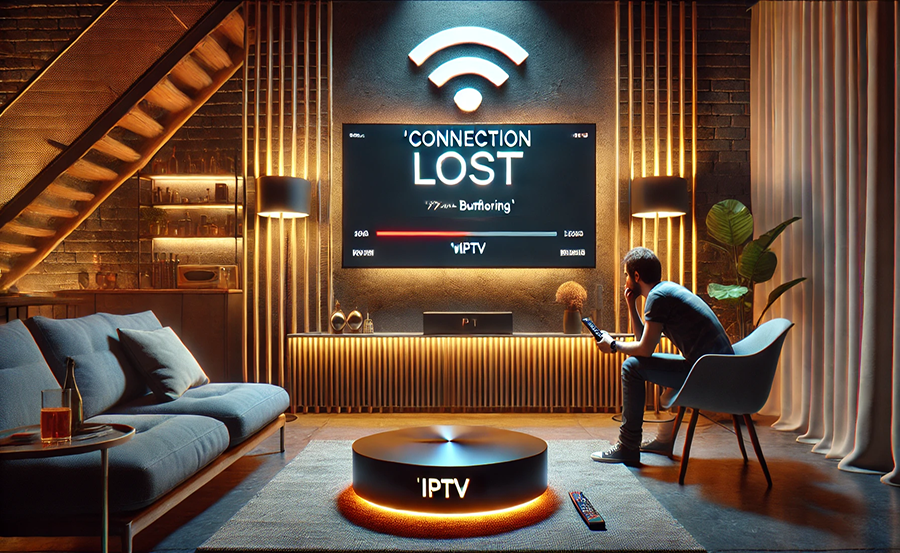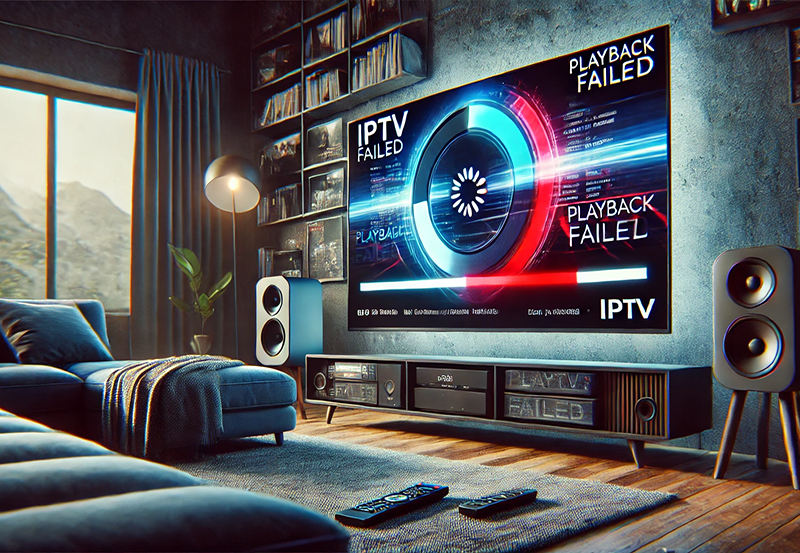In an era where digital streaming defines our entertainment experience, IPTV has emerged as a pivotal platform, particularly for sports enthusiasts. You’re settling in for the big game, snacks in hand, and suddenly, an endless spinning wheel appears on your screen. Frustration mounts. We’ve all been there. Frequent IPTV connection interruptions can turn an exciting match into a test of patience. But fret not, for there are a plethora of solutions. This article delves into ingenious methods to tackle these disruptions, ensuring your IPTV experience is seamless, engaging, and uninterrupted.
Buy 1 Year IPTV Subscription and Enjoy Unlimited Content
Understanding Common IPTV Connection Interruptions
Bandwidth Bottleneck
One of the primary culprits behind IPTV connection issues is bandwidth limitation. In simpler terms, your internet speed might not be up to the task. Think of bandwidth as the size of a freeway; if too many cars (or data) try to travel through a two-lane road, traffic jams (buffering) occur. If your internet service isn’t robust enough, these interruptions can ruin the viewing experience.
Often, users underestimate the internet speed needed for smooth streaming. Even when other devices connect to the network, problems can manifest if the cumulative bandwidth demand exceeds the available supply.
Ensuring Optimal Bandwidth Usage
Firstly, check your internet speed. Several online tools can assess whether your connection is up to par for IPTV streaming. You’ll want at least 10 Mbps for SD and 25 Mbps for HD streaming. Consider upgrading your plan or reducing the number of connected devices.
Moreover, position your router centrally in your home, ensuring your IPTV device is within range without obstacles. You might also want to invest in a mesh network to extend coverage.
Server-side Glitches
Another common issue lies with the IPTV service provider’s server reliability. Servers overloaded with too many requests can cause delays or audio-video lags. It’s like dialing a free hotline that a thousand others try to simultaneously; the connection becomes unreliable.
These server problems might be intermittent depending on the service load, leading to inconsistencies in your viewing pleasure.
Choosing Reliable IPTV Providers
Select a reputable IPTV service known for robust server performance. Look for customer reviews and uptime guarantees. Also, consider using a backup server option within your IPTV application to switch if the primary server lags.
Advanced Techniques to Minimize Disruptions
Utilizing Quality of Service (QoS)
Quality of Service features prioritize your IPTV signal over other types of data traffic on your network. It’s akin to having a reserved lane on the freeway just for you. Many modern routers come equipped with QoS settings, allowing you to allocate bandwidth hierarchy to specific devices or apps.
Enabling QoS can dramatically improve stability, especially during peak usage hours when neighboring networks are clogged.
VPN Utilization for Consistent Streaming
Another intriguing solution is employing a Virtual Private Network (VPN). Not only does a VPN provide enhanced security, but it can also offer a more stable connection. Sometimes, Internet Service Providers (ISPs) throttle bandwidth for streaming. A VPN helps bypass such throttling, ensuring smooth streaming.
For sports enthusiasts accessing geo-restricted content, VPNs can also simulate a location change, optimizing the viewing options further.
Steps to Set Up a VPN with IPTV
- Choose a credible VPN provider with high-speed servers.
- Install the VPN software on your streaming device.
- Select a server close to your actual location for the best speed.
- Enable the VPN before launching your IPTV app.
User-friendly Solutions for Everyday Issues
Updating and Reinstalling Apps
The software version of your IPTV application can also determine performance quality. Outdated apps may become incompatible or suffer bugs that hinder streaming. Regular updates ensure you benefit from the latest features and fixes.
If issues persist post-update, consider reinstalling the application to clear out corrupted data files.
Troubleshooting with Device Restarts
Indeed, the simplest solutions are sometimes the most effective. Restarting your streaming device can clear temporary glitches, free up memory, and bolster streaming performance. It’s surprising how many connectivity issues a simple reboot can fix.
Step-by-Step Device Restart Process
First, unplug your device from its power source and wait about 30 seconds. Next, plug it back in and restart the device. Once operational, test your IPTV connection again.
Integrating Smart Tactics for an Enhanced Experience
How to Install IPTV for Optimal Performance
The installation phase is often overlooked but essential. This isn’t merely a one-click process; precision can determine performance quality. Ensure every step, from downloading reputable IPTV applications to configuring settings, is followed diligently.
Installers should recognize that not every device is pre-configured for optimal IPTV utilization and make adjustments as necessary.
Master Your IPTV Entertainment Experience
Discovering new features and personalizing settings can truly elevate your IPTV experience. Experiment with interface themes or arrange channels per viewing habits to maximize convenience.
Additionally, take advantage of parental controls to ensure content viewed aligns with household preferences. Keeping tabs on potential future innovations can also keep your setup ahead of the curve.
Real-Life Case Studies: Success Stories
From Frustration to Satisfaction
Sometimes, the real value in technical solutions is showcased through the experiences of others. Let me tell you about Jane, a sports aficionado who faced persistent interruptions during major league matches. Initial frustration led her to reevaluate her home network configuration.
Investing in a new router with enhanced QoS settings and switching to a more reliable IPTV provider, Jane once again enjoys uninterrupted streaming. She leveraged online resources to better comprehend her system requirements, culminating in a tailored, stable connection.
Final Musings: A World of Streamlined Entertainment Awaits
In the end, navigating IPTV challenges boils down to understanding and applying the right strategies. With technology evolving incessantly, the key to a harmonious IPTV experience lies in staying informed, proactive, and adaptive. Whether it’s enjoying sport spectacles or catching up on blockbuster hits, a seamless streaming experience is a few calculated steps away.
FAQ Section

Why does my IPTV keep buffering?
Buffering is typically due to insufficient internet bandwidth or server-related issues. Ensuring your internet speed meets requirements and selecting a reliable provider are key first steps in minimizing buffering.
Can IPTV run on any device?
Most modern devices with internet access support IPTV, including Smart TVs, computers, tablets, and smartphones. Ensure your device meets application requirements for optimal functionality.
How can a VPN help my IPTV service?
A VPN can prevent ISP throttling, offering a consistent streaming experience. It can also unblock geo-restricted content, broadening your entertainment options.
Is a wired or wireless connection better for IPTV?
A wired connection is generally more stable and reliable for IPTV, reducing interruptions typical with wireless connections. However, a robust wireless network can suffices when a wired option isn’t possible.
What should I consider when choosing an IPTV provider?
Key considerations include server reliability, customer support, application updates, and user reviews. Opting for a provider with backup server options can also mitigate connection issues.
ProgTV on Android: A Simplified Setup Guide





